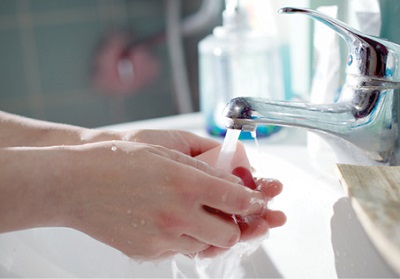The Importance of Hand Washing

Keeping hands clean is one of the most important steps we can take to avoid getting sick and spreading germs to others. Many diseases and conditions are spread by not washing hands with soap and clean, running water. The CDC recommends cleaning hands in a specific way to avoid getting sick and spreading germs to others.
Wet your hands with clean, running water (warm or cold), turn off the tap, and apply soap. Hands could become recontaminated if placed in a basin of standing water that has been contaminated through previous use, clean running water should be used. The temperature of the water does not appear to affect microbe removal; however, warmer water may cause more skin irritation and is more environmentally costly.
Turning off the faucet after wetting hands saves water, and there is little evidence that proves whether a significant numbers of germs are transferred between hands and the faucet.
Using soap to wash hands is more effective than using water alone because the surfactants in soap lift soil and microbes from skin, and people tend to scrub hands more thoroughly when using soap, which further removes germs.
Lather your hands by rubbing them together with the soap. Be sure to lather the backs of your hands, between your fingers, and under your nails. Lathering and scrubbing hands creates friction, which helps lift dirt, grease, and microbes from skin. Microbes are present on all surfaces of the hand, often in particularly high concentration under the nails, so the entire hand should be scrubbed.
Scrub your hands for at least 20 seconds. Need a timer? Hum the “Happy Birthday” song from beginning to end twice. Evidence suggests that washing hands for about 15-30 seconds removes more germs from hands than washing for shorter periods. The optimal length of time for handwashing is also likely to depend on many factors, including the type and amount of soil on the hands and the setting of the person washing hands. Source: cdc.gov
![Hardinsburg Nursing & Rehabilitation Center [logo]](https://www.hardinsburgnursing.com/wp-content/uploads/sites/98/2017/04/logo.png)